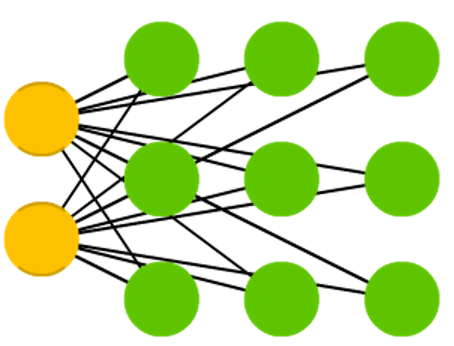Difference between revisions of "Kohonen Network (KN)/Self Organizing Maps (SOM)"
m (Text replacement - "http:" to "https:") |
|||
| Line 5: | Line 5: | ||
|description=Helpful resources for your journey with artificial intelligence; videos, articles, techniques, courses, profiles, and tools | |description=Helpful resources for your journey with artificial intelligence; videos, articles, techniques, courses, profiles, and tools | ||
}} | }} | ||
| − | [ | + | [https://www.youtube.com/results?search_query=Kohonen+Network+KN+self+organizing+maps+SOM YouTube search...] |
| − | [ | + | [https://www.google.com/search?q=Kohonen+Network+KN+self+organizing+maps+SOM+deep+machine+learning+ML+artificial+intelligence ...Google search] |
| − | * [ | + | * [https://www.asimovinstitute.org/author/fjodorvanveen/ Neural Network Zoo | Fjodor Van Veen] |
Kohonen networks (KN, also self organising (feature) map, SOM, SOFM) “complete” our zoo. KNs utilise competitive learning to classify data without supervision. Input is presented to the network, after which the network assesses which of its neurons most closely match that input. These neurons are then adjusted to match the input even better, dragging along their neighbours in the process. How much the neighbours are moved depends on the distance of the neighbours to the best matching units. KNs are sometimes not considered neural networks either. Kohonen, Teuvo. “Self-organized formation of topologically correct feature maps.” Biological cybernetics 43.1 (1982): 59-69. | Kohonen networks (KN, also self organising (feature) map, SOM, SOFM) “complete” our zoo. KNs utilise competitive learning to classify data without supervision. Input is presented to the network, after which the network assesses which of its neurons most closely match that input. These neurons are then adjusted to match the input even better, dragging along their neighbours in the process. How much the neighbours are moved depends on the distance of the neighbours to the best matching units. KNs are sometimes not considered neural networks either. Kohonen, Teuvo. “Self-organized formation of topologically correct feature maps.” Biological cybernetics 43.1 (1982): 59-69. | ||
| − | + | https://www.asimovinstitute.org/wp-content/uploads/2016/09/kn.png | |
<youtube>GdZckTLNqsY</youtube> | <youtube>GdZckTLNqsY</youtube> | ||
Latest revision as of 20:59, 28 March 2023
YouTube search... ...Google search
Kohonen networks (KN, also self organising (feature) map, SOM, SOFM) “complete” our zoo. KNs utilise competitive learning to classify data without supervision. Input is presented to the network, after which the network assesses which of its neurons most closely match that input. These neurons are then adjusted to match the input even better, dragging along their neighbours in the process. How much the neighbours are moved depends on the distance of the neighbours to the best matching units. KNs are sometimes not considered neural networks either. Kohonen, Teuvo. “Self-organized formation of topologically correct feature maps.” Biological cybernetics 43.1 (1982): 59-69.
